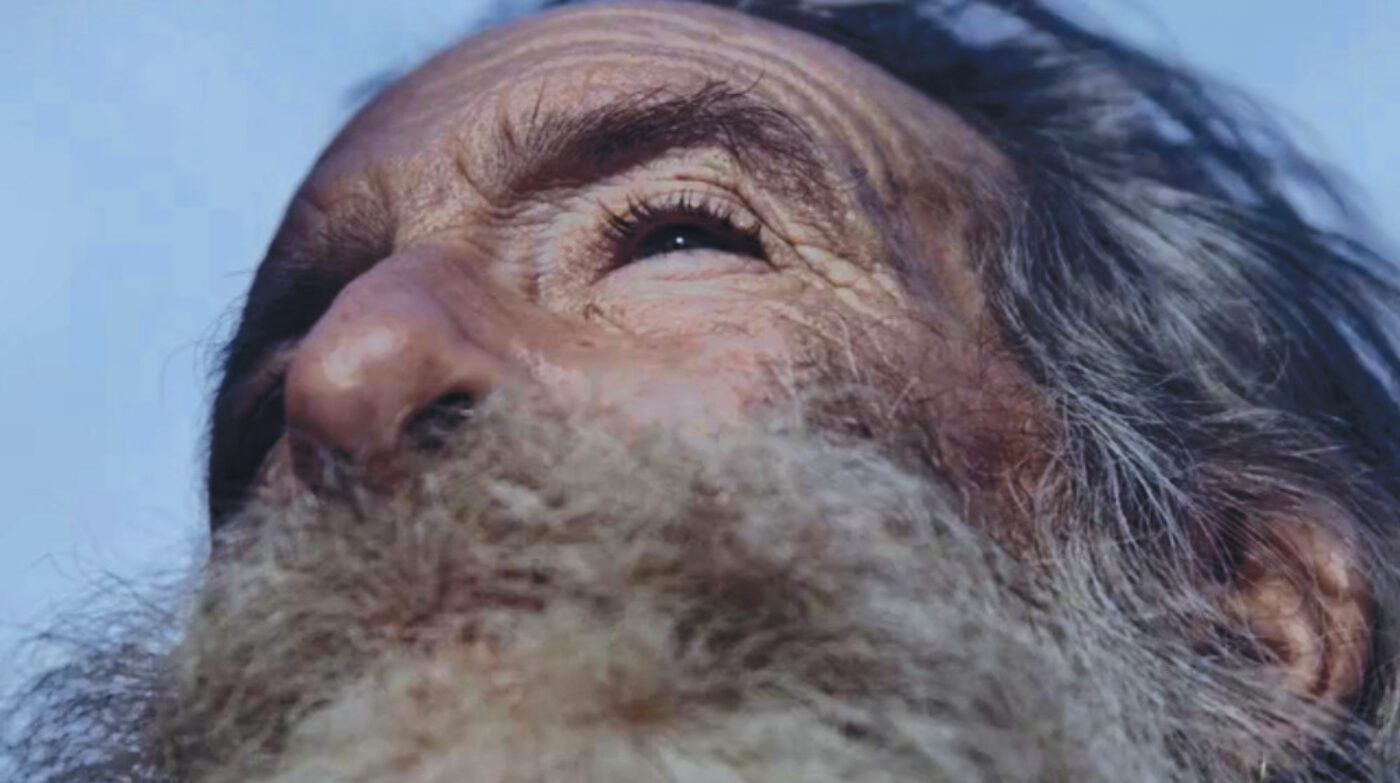The Shape of Things to Come
Director/ Lisa Malloy, J.P. Sniadecki
Watched on MUBI
Rating 4/5
Whenever I ask my adult son the question “How are things going?” he likes to answer with a joke: “I’m livin’, that’s enough for me.” The lone character at the center of The Shape of Things to Come would answer the question the same way, and he’d mean it.
Directed by Lisa Malloy and J.P. Sniadecki (El Mar La Mar) the film shares the same title as the H.G. Wells book published in 1933, which Wells wrote as a kind of “future history” depicting a benevolent 22nd century utopia of nations, one that has eradicated war and dictatorships. In this experimental documentary, the utopia is centered in a patch of sand and scrub in the Sonoran Desert, and it is inhabited by one man whom we learn, at film’s end, is named Sundog. Rangy and bearded and weather-beaten, Sundog looks like a crazy off-the-grid hermit, especially as he obsessively wanders the grounds doing his chores or when he is talking to himself in a kind of gibberish, whether he is disemboweling a javelina or collecting the poison of a toad.
But he is not that far off-the-grid. He has electricity, a cell phone, and a pick-up; he visits the local library for his nightly reading; he spends a little time at the local bar listening to a live band and engaging is a bit of dancing, and he is remarkably coherent and well-spoken when having to communicate with others. Despite the rundown conditions of his house trailer and garden and surrounding shacks, one could agree that Sundog does indeed live in a simulacrum of utopia, defined on his own terms. He is merely happy to be alive and living on planet Earth, which is why he takes particular offense at the surveillance towers, drones, and border patrol vehicles constantly encroaching on his desert Eden.
The conflict Sundog has with these interlopers is, however, mostly theoretical and off-screen. They don’t really bother him. And except for the daily flyovers of jets, we wouldn’t even know there is anyone else in his orbit. Whatever tension exists in this film is mostly created by the filmmaker’s choice to shoot nearly every scene in claustrophobic close-ups and compressed medium shots. It’s a rigorous decision that creates a hallucinatory effect, essentially locking the viewer into Sundog’s point-of-view, a dizzying and jagged succession of mundane daily tasks, which include eating, bathing, shitting, and pissing. There is virtually no narration or backstory, no onscreen signposts of chronology or locations, nothing to tell us how to categorize or think about the character or how he fits into our expectations of the world. There is nary a wide shot to be found on this panoramic frontier of desert vistas, no real overview of Sundog’s living quarters, no sense of where to locate him in the landscape, no beautiful sunrises or horizon-filling sunsets, not even a stretch of highway showing the heat waves of the asphalt as it disappears to a vanishing point.
But this absence of the obligatory clichés of scene-building is what I found invigorating about the filmmakers’ approach. By inhabiting Sundog’s micro worldview, we are forced to dispense with the usual touchstones of documentary experience. The film is about as far removed from current trends in doc filmmaking as you can get: there is no third-party agenda, no corporate influence, not even a trace of social justice virtue signaling. It’s just one man living his life, and that’s enough for this film.

